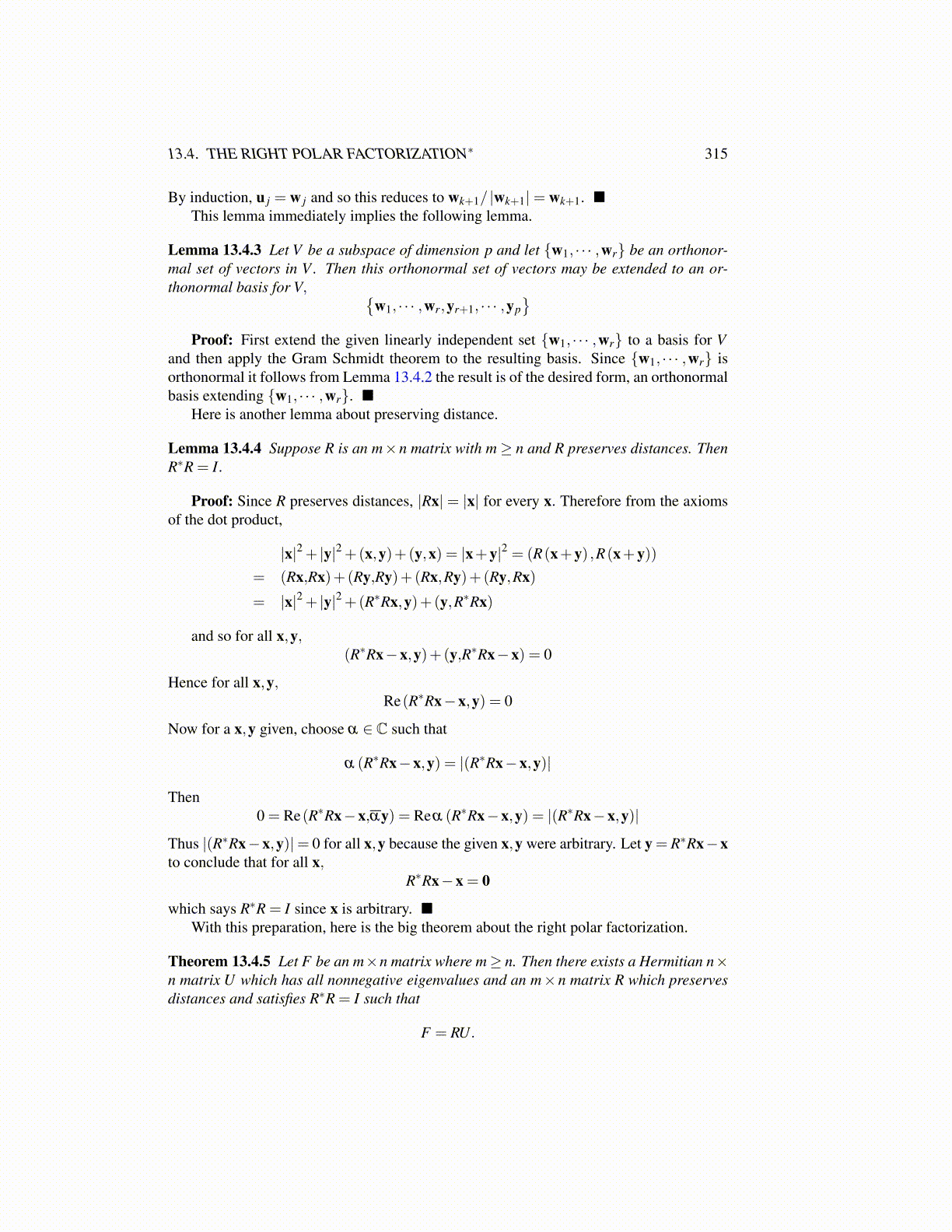
13.4. THE RIGHT POLAR FACTORIZATION∗ 315
By induction, u j = w j and so this reduces to wk+1/ |wk+1|= wk+1. ■This lemma immediately implies the following lemma.
Lemma 13.4.3 Let V be a subspace of dimension p and let {w1, · · · ,wr} be an orthonor-mal set of vectors in V . Then this orthonormal set of vectors may be extended to an or-thonormal basis for V, {
w1, · · · ,wr,yr+1, · · · ,yp}
Proof: First extend the given linearly independent set {w1, · · · ,wr} to a basis for Vand then apply the Gram Schmidt theorem to the resulting basis. Since {w1, · · · ,wr} isorthonormal it follows from Lemma 13.4.2 the result is of the desired form, an orthonormalbasis extending {w1, · · · ,wr}. ■
Here is another lemma about preserving distance.
Lemma 13.4.4 Suppose R is an m×n matrix with m≥ n and R preserves distances. ThenR∗R = I.
Proof: Since R preserves distances, |Rx| = |x| for every x. Therefore from the axiomsof the dot product,
|x|2 + |y|2 +(x,y)+(y,x) = |x+y|2 = (R(x+y) ,R(x+y))= (Rx,Rx)+(Ry,Ry)+(Rx,Ry)+(Ry,Rx)= |x|2 + |y|2 +(R∗Rx,y)+(y,R∗Rx)
and so for all x,y,(R∗Rx−x,y)+(y,R∗Rx−x) = 0
Hence for all x,y,Re(R∗Rx−x,y) = 0
Now for a x,y given, choose α ∈ C such that
α (R∗Rx−x,y) = |(R∗Rx−x,y)|
Then0 = Re(R∗Rx−x,αy) = Reα (R∗Rx−x,y) = |(R∗Rx−x,y)|
Thus |(R∗Rx−x,y)|= 0 for all x,y because the given x,y were arbitrary. Let y = R∗Rx−xto conclude that for all x,
R∗Rx−x = 0
which says R∗R = I since x is arbitrary. ■With this preparation, here is the big theorem about the right polar factorization.
Theorem 13.4.5 Let F be an m×n matrix where m≥ n. Then there exists a Hermitian n×n matrix U which has all nonnegative eigenvalues and an m×n matrix R which preservesdistances and satisfies R∗R = I such that
F = RU.